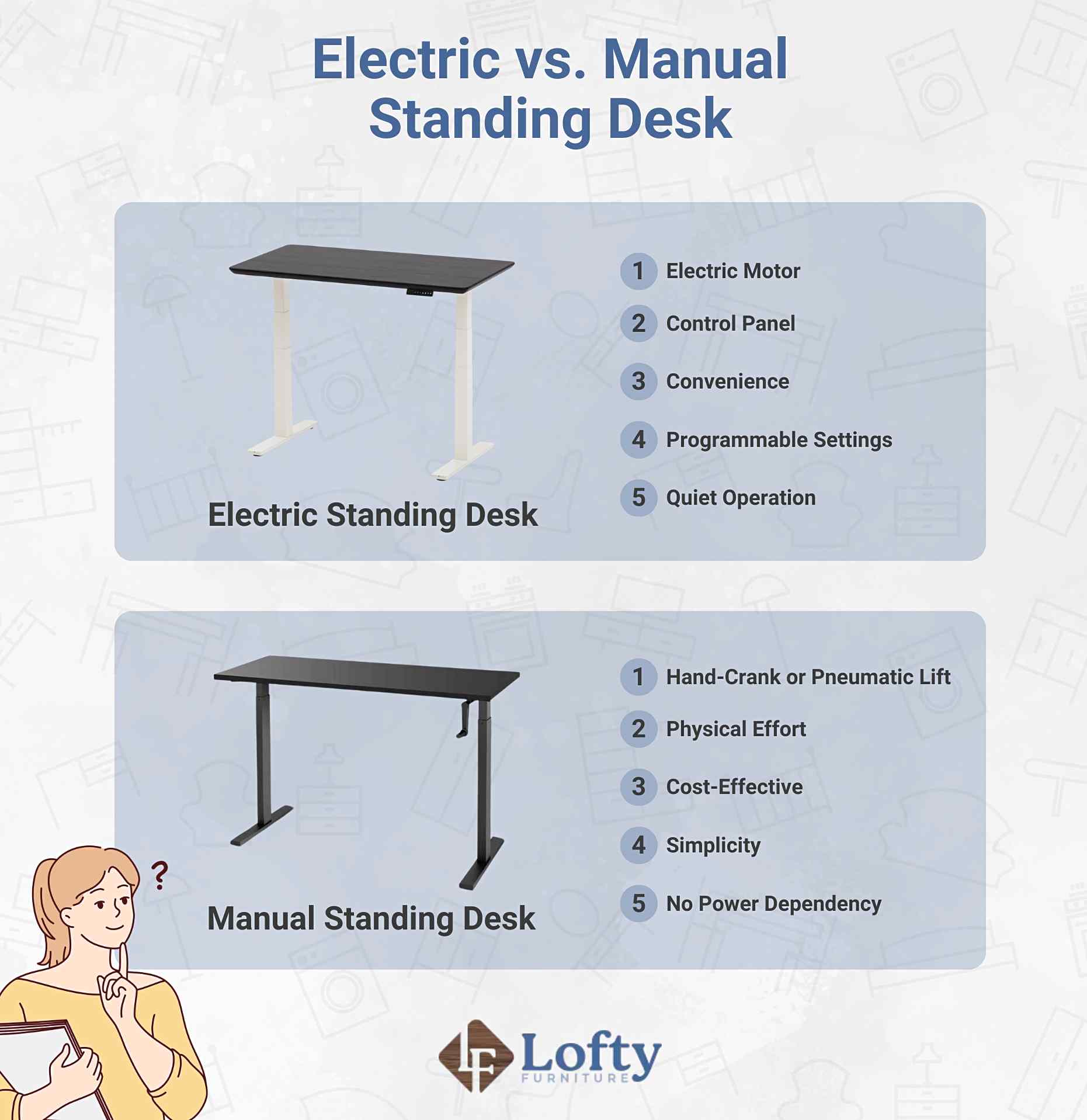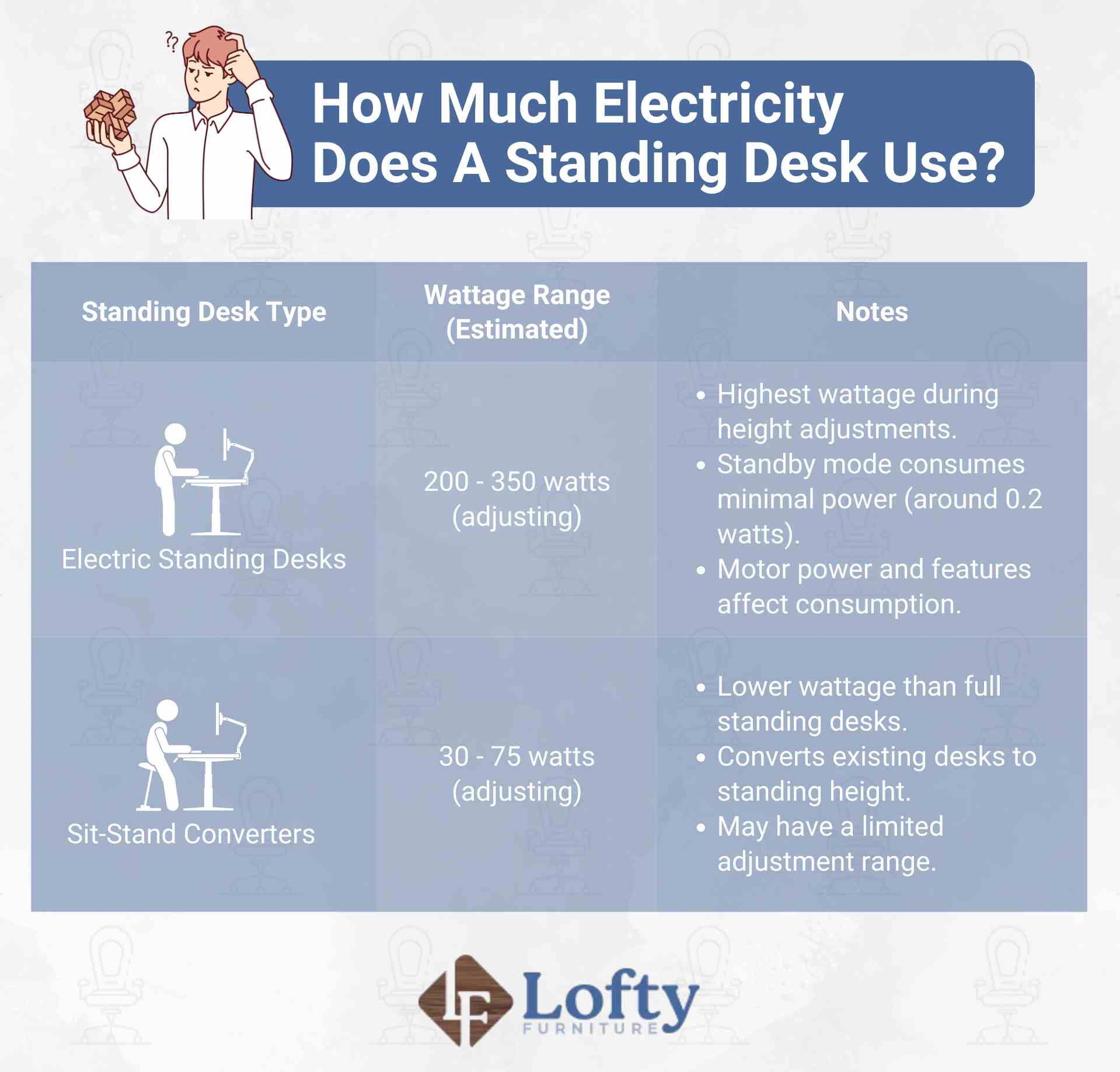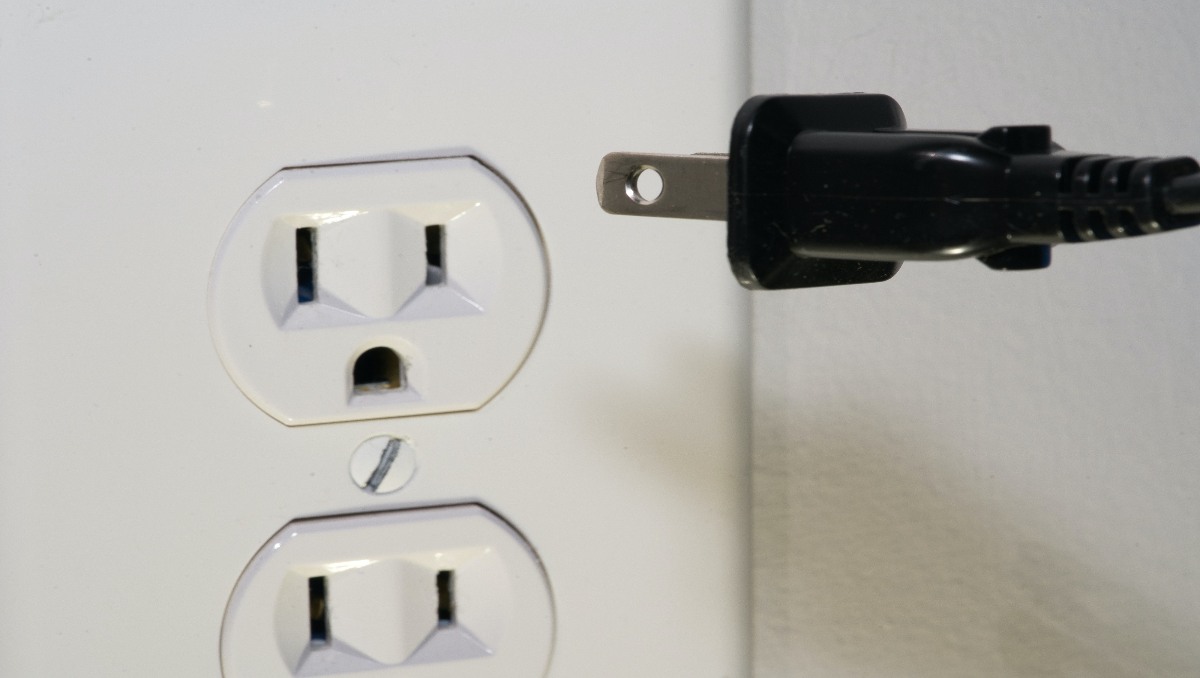As the popularity of standing desks continues to soar, understanding the electrical consumption of these dynamic workstations is pivotal for eco-conscious consumers. Let’s delve into an increasingly relevant question in the era of ergonomic innovation: How much electricity does a standing desk use?
The electricity usage of a standing desk is minimal, thanks to energy-efficient motors and standby modes. On average, they use only 200-350 watts while adjusting (less than a light bulb) and a mere 0.2 watts on standby (barely a whisper).
In this article, we will delve into the world of standing desks and explore just how much electricity they use.
Understanding the Components of a Standing Desk
When considering the components of a standing desk, it is important to understand the differences between the different types of standing desks, such as the electric and manual options. Here’s an overview on how they’re different from each other:

If you want to save on electricity, opt for a manual standing desk instead of a motorized one. Manual standing desks are more electricity efficient as they don’t require any electrical components to function. They operate solely based on mechanical adjustments, allowing you to switch between sitting and standing positions without using any power.
In addition to being energy-efficient, manual standing desks also offer numerous health benefits. Their ergonomic design promotes better posture, reduces the risk of musculoskeletal disorders, and improves blood circulation.
When comparing costs, manual standing desks are generally more affordable than their motorized counterparts due to the absence of electrical components.
Ultimately, the choice between a motorized or manual standing desk depends on your personal preferences and priorities regarding electricity usage and overall well-being.
Power Consumption Variations Based on Design
The power consumption of different standing desk designs can vary significantly.
Motorized desks use electricity to adjust the height, while manual desks require physical effort from the user. In terms of power usage, motorized desks generally consume more electricity due to the motors and electronic components involved in their operation. However, technological advancements have increased energy efficiency in these motorized models.
The power consumption can vary based on the design and features of electric standing desks. Several factors influence the power usage of these desks:
Motor Type: The type and efficiency of the electric motor used for height adjustment can impact power consumption. Some desks may use more energy-efficient motors, contributing to lower power usage.
Materials and Construction: The build quality and materials used in the desk’s construction can influence its overall weight. Heavier desks may require more power to lift and lower.
Adjustment Speed: Faster adjustment speeds may lead to higher power consumption. Some desks offer variable speed settings to balance speed and energy efficiency.
Additional Features: Built-in features such as programmable height presets, USB ports, or wireless charging can contribute to increased power consumption.
Standby Mode: Desks with energy-saving standby modes or automatic power-off features can help reduce overall power consumption when not in use.
Brand and Model: Different brands and models may have varying power efficiency levels. It is advisable to check the specifications provided by the manufacturer for details on power consumption.
Electricity Consumption of a Standing Desk

To maximize your productivity and minimize your energy bill, you will be surprised at how little electricity a standing desk actually uses. The difference is quite significant when comparing the electricity usage of a standing desk to other common household appliances, such as a refrigerator or dishwasher.
On average, a standing desk consumes approximately 0.1 to 0.5 kilowatt-hours (kWh) per day. In terms of environmental impact, the energy consumption of a standing desk is relatively low.
By opting for a standing desk instead of traditional sitting desks, you are making a positive choice towards reducing your carbon footprint. Additionally, many standing desks offer energy-saving options such as power-saving modes or automatic shut-off timers when not in use.
When considering long-term cost analysis, it is essential to note that the electricity consumption of a standing desk will depend on various factors such as usage time and specific design features. However, even with regular use throughout the day, the overall electricity cost remains minimal compared to other electrical devices commonly found in households.
Incorporating a standing desk into your workspace promotes productivity and contributes to energy efficiency and sustainability efforts. With its low electricity consumption and potential for long-term cost savings, investing in a standing desk proves beneficial for personal well-being.
Factors Influencing Electricity Consumption
When considering the factors that influence the electricity consumption of a standing desk, there are several key points to take into account.

1. Desk Size and Weight Capacity
The standing desk size and weight capacity are important factors when considering electricity consumption.
Larger desks with higher weight capacities tend to use more electricity due to the increased power required for their motorized mechanisms. Additionally, ergonomics plays a role in energy usage as well. Standing desks that allow height adjustments need more electricity than fixed-height desks.
Material quality also affects energy consumption, as desks made from heavier materials may require more power to operate smoothly. Lastly, price range can be an indicator of electricity usage, with higher-end standing desks often having more advanced features that consume more energy.
2. Frequency of Adjustments
The frequency of adjustments can affect the electricity usage of a standing desk, particularly for electric standing desks. The more often you adjust the standing desk’s height, the more frequently the motor has to engage, leading to increased energy consumption.
If you constantly switch between sitting and standing throughout the day, the desk will use more electricity than infrequent adjustments.
It is worth noting that the power consumption during the adjustment process itself is relatively small. Still, the cumulative effect of frequent adjustments can contribute to a noticeable impact on energy usage over time.
To minimize energy consumption, you might consider setting the desk at a comfortable standing height for extended periods and adjusting less frequently or choosing a desk with energy-saving features, such as standby modes or automatic shutoff when not in use.
3. Standby Mode Settings
Standby mode provides convenience and energy-saving features that contribute to a more sustainable and efficient workspace. By utilizing standby mode benefits, you can optimize power-saving options and reduce energy consumption during periods of inactivity.
Energy-efficient standby settings are designed to minimize standby power usage without compromising functionality or performance. These settings allow your standing desk to conserve electricity when not in use while still being readily available for immediate use when needed.
By incorporating these energy-saving features into your workspace, you can contribute to a more environmentally conscious and cost-effective setup while enjoying the benefits of an ergonomic standing desk.
4. Plug Load
Understanding plug load is crucial in managing and optimizing electricity usage when it comes to standing desks.
The amount of electricity a standing desk uses depends on various factors such as the type of motor, height adjustments, and additional features like built-in USB ports or LED lights. While these features enhance ergonomic benefits and health advantages for users, they also impact productivity by providing convenience and functionality.
To save energy and reduce environmental impact, consider utilizing power-saving settings or investing in smart power strips that automatically turn off peripheral devices when not in use. Being mindful of plug load can help you strike a balance between enjoying the benefits of a standing desk and minimizing unnecessary energy consumption.
Comparisons with Other Office Equipment
A power consumption analysis reveals that standing desks are more energy-efficient than their counterparts. Efficiency ratings show that standing desks consume significantly less electricity than traditional desks or office cubicles.

Compared to an average printer with a power consumption of 1,000 watts, a standing desk uses approximately 200-350 watts. These electricity usage comparisons clearly demonstrate the energy-saving measures associated with using a standing desk.
In addition to consuming less electricity, standing desks have lower standby power consumption rates than other office equipment. While some office equipment consumes power even in idle mode, modern standing desks often have standby modes that reduce their electricity usage substantially. This further contributes to the overall energy efficiency of these innovative workstations.
With its low electricity usage and efficient design, the standing desk is an excellent choice for those seeking both productivity and sustainability in their workplace environment.
Energy-Efficient Features in Standing Desks
With their energy-saving features, standing desks utilize various energy-saving technologies and power-saving modes to minimize their energy usage.
One of the key elements in energy-efficient standing desks is the use of energy-efficient materials. Manufacturers often opt for materials that have minimal impact on the environment throughout their lifecycle. This reduces energy consumption during production and ensures durability and longevity.
Additionally, many standing desks incorporate smart sensors that detect user presence or absence. These sensors allow the desk to automatically adjust its height or switch to a power-saving mode when not in use. By intelligently adapting to user behavior, these desks optimize energy usage and further reduce electricity consumption.
Sustainable design principles are also integrated into the construction of these desks. For instance, they may be made from recycled or recyclable materials, reducing waste generation.
Furthermore, some models feature built-in timers that remind users to take breaks or switch between sitting and standing positions at predetermined intervals. This promotes healthier work habits while conserving electricity.
With their energy-saving technologies, power-saving modes, use of energy-efficient materials, smart sensors, and sustainable design, standing desks contribute significantly to reducing electricity consumption in the workplace. Incorporating these features benefits individual users and helps create a more environmentally friendly workspace for all.
Tips for Users to Minimize Electricity Usage

To conserve energy while using a standing desk for gaming or work, you can easily adjust the height to find your most comfortable position. This simple action not only promotes a healthier work environment but also helps in reducing energy consumption.
There are several other energy-saving strategies and power-saving techniques that you can incorporate into your routine to make your standing desk more eco-friendly.
Firstly, consider investing in an energy-efficient standing desk, especially if you’re concerned about long standing duration. Look for models that have been designed with energy conservation in mind. These desks often come equipped with features such as motion sensors or timers that automatically turn off the motor when the desk is not in use.
Additionally, make sure to turn off any unnecessary electronic devices or equipment when not in use. This includes computer monitors, task lights, and other peripherals.
Furthermore, take advantage of natural light whenever possible. Positioning your desk near a window allows you to rely less on artificial lighting during daylight hours.
Consider implementing eco-friendly office equipment such as LED task lights or low-power-consumption devices. These small changes can significantly impact reducing electricity usage while using a standing desk.
You might be interested in exploring the benefits of an ergonomic chair vs. standing desk.
Watts Up! The Verdict on Standing Desk Electricity Costs
The electricity consumption of a standing desk is dependent on various factors, such as the type of motor used, the weight it supports, and the frequency of adjustment.
While no precise data is available for specific brands of standing desks, estimates suggest that their energy usage falls within a reasonable range. However, with technological advancements and the availability of energy-efficient features, standing desks are becoming more environmentally friendly.
Users can further minimize their electricity consumption by implementing simple strategies to reduce usage and contribute to a greener workspace.

Rose Cabrera, this is a fantastic article!
Key takeaways:
Efficiency: A motorized standing desk uses minimal power: 200-350 watts when adjusting and watts on standby.
Cost Driver: The main energy cost is from the peripherals plugged into the desk.
Excellent context for eco-conscious buyers!